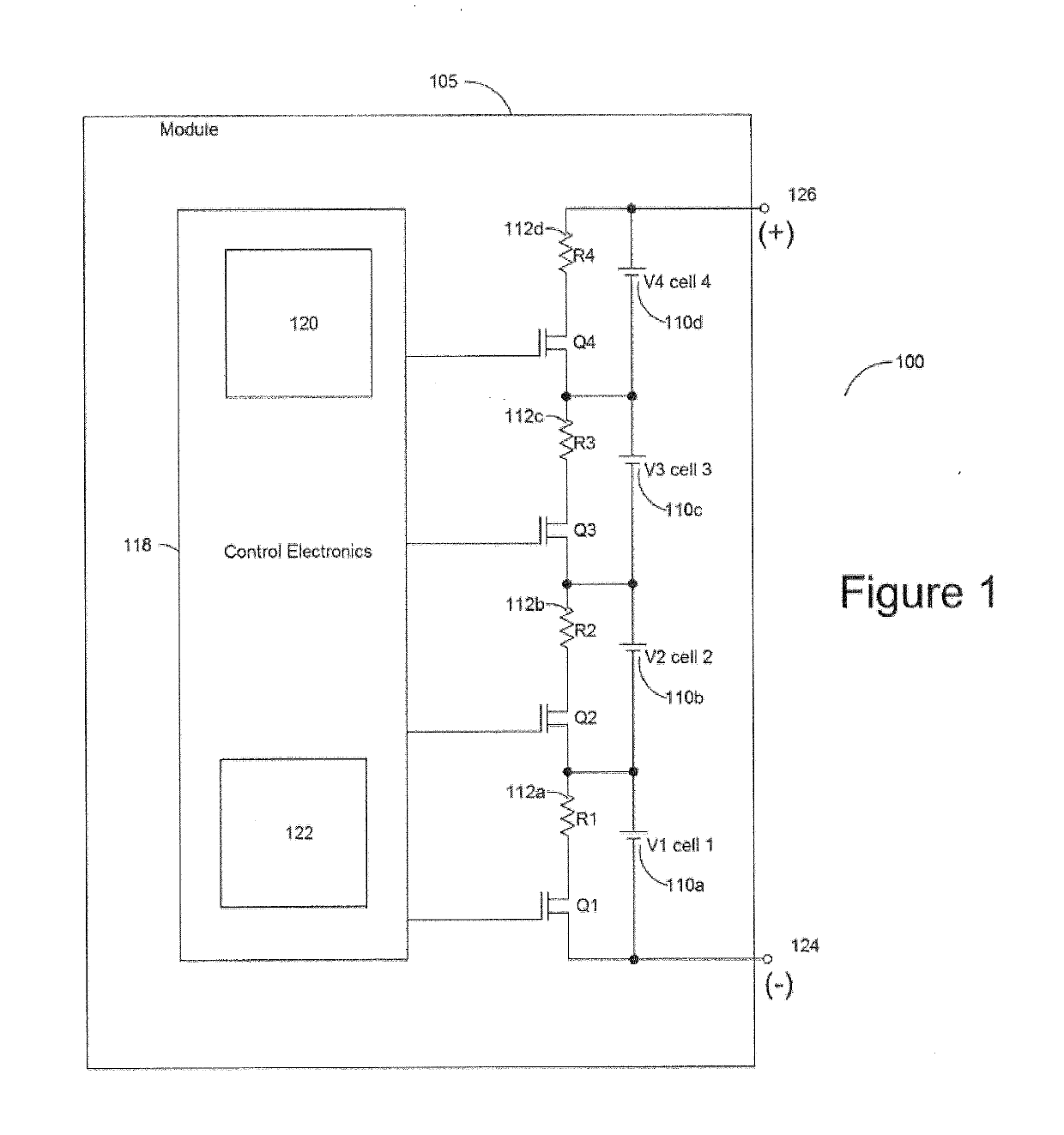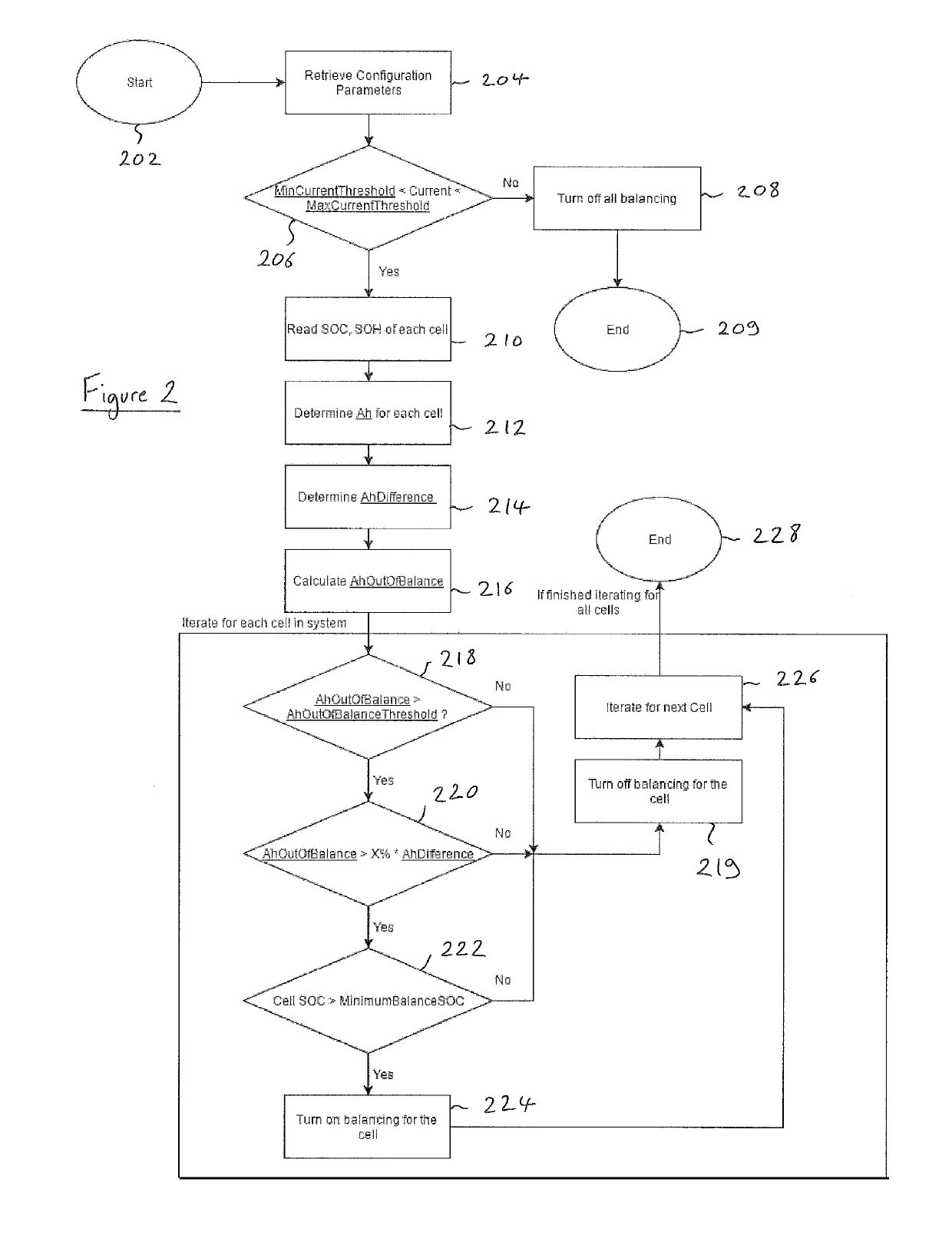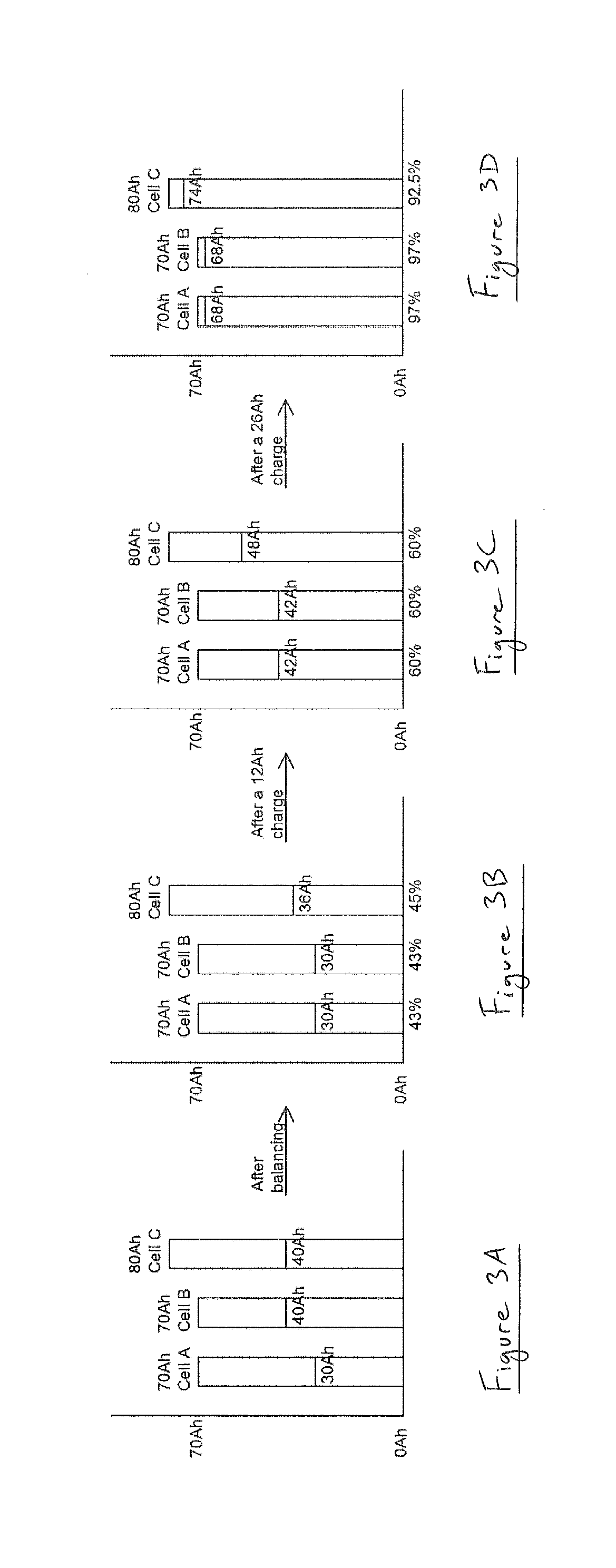Balancing a multi-cell battery
- Summary
- Abstract
- Description
- Claims
- Application Information
AI Technical Summary
Benefits of technology
Problems solved by technology
Method used
Image
Examples
Embodiment Construction
[0049]The present disclosure seeks to provide improved methods of balancing a multi-cell battery. While various embodiments of the disclosure are described below, the disclosure is not limited to these embodiments, and variations of these embodiments may well fall within the scope of the disclosure which is to be limited only by the appended claims.
[0050]Turning to FIG. 1, there is shown a circuit diagram of a system 100 for balancing a multi-cell battery, in accordance with an embodiment of the disclosure. System 100 comprises a battery module 105 having a plurality of serially connected lithium-ion cells 110a-d. Note that although in the present embodiment cells 110a-d are represented as single cells, in other embodiments each of cells 110a-d may be a series element comprising one or more cells in parallel. In addition, although the embodiment of FIG. 1 shows four cells in series arrangement, the disclosure embraces battery modules with any number of cells.
[0051]Each cell 110a-d i...
PUM
 Login to View More
Login to View More Abstract
Description
Claims
Application Information
 Login to View More
Login to View More - R&D
- Intellectual Property
- Life Sciences
- Materials
- Tech Scout
- Unparalleled Data Quality
- Higher Quality Content
- 60% Fewer Hallucinations
Browse by: Latest US Patents, China's latest patents, Technical Efficacy Thesaurus, Application Domain, Technology Topic, Popular Technical Reports.
© 2025 PatSnap. All rights reserved.Legal|Privacy policy|Modern Slavery Act Transparency Statement|Sitemap|About US| Contact US: help@patsnap.com



